2013 Yamaha FZS Review
The spirit of the GPR lives on
Remember Yamaha’s GPR models? They were a favorite of performance junkies thanks to a classic combination of attributes – they had power and they handled like nobody’s business. In short, they were some fun craft to ride hard.
GPRs are gone, but the spirit of that ride lives on in boats like the FZS.
Let’s Get Agro
When the FZS first made its debut, one highly touted feature was its telescoping steering column. The buzz may have died down over the years since, but that feature still gives the FZS a feel unique amongst other models on the market. Riders that like to frequently stand and take some of the abuse of rough water with their legs will appreciate the fact that the handlebars can extend upwards, requiring less of a hunched-over posture and taking some strain off the lower back. Those that like to get really close to the water and blast their way through a turn will likewise appreciate the fact the bars can also be lowered beyond the norm to enhance an ultra-aggressive handling posture.
VIEW: Read our review of the Yamaha FZR
And aggressive is arguably what the FZS does best. Designed to evoke the feeling of the brand’s popular GPR series, the FZS features a pronounced lean-in handling style and aggressive cornering manners. The latter is made possible by soft, rounded chines which prompt it to roll easily on edge. That agility is enhanced by a manual trim system. Drop the nozzle to place more hull in the water as you enter into a turn; raise it upon exit to enhance top speed. Combine that nimble agility with full-length lifting strakes that get the craft quickly on plane and you’ve got a performance-minded model geared for the aggressive enthusiast. It jumps on plane, charges hard through the corners, and displays Yamaha’s trademark ability in rough seas. In short, it’s a classic turn-and-burn watercraft.
That it does all that, while still allowing for a third passenger, is what distinguishes the FZS from the almost identical FZR. The room for that third party comes courtesy of the seat, a flatter design that provides more room for that extra body, but also makes it easier to position a rear-facing spotter for towing. The flatter perch gives the owner a little more flexibility in the craft’s use, while retaining all of the performance advantages below.
Pure Performance
The most nimble hull is nothing without an engine to power it through the water. Below the seat Yamaha chooses its top-of-the-line 1.8-liter engine package, complete with supercharger and intercooler. That’s a lot of power to pack into this hull, especially given the hull itself is also a step beyond the norm. Made from Yamaha’s NanoXcel material, it’s lighter than traditional construction methods, and arguably stronger to boot. Add in electronic throttle to quicken the throttle response, and you’ve got a craft that jumps out of the hole, reaches 30 mph in as brief a span as 1.8 seconds, and reaches the magical number – 65 mph – with relative ease.
COMPETITION: Read our review of the Kawasaki Ultra 300X
As the FZS is obviously performance minded, don’t expect the extras you’d find on FX models. Despite the inclusion of electronic throttle, you don’t get cruise control or no-wake mode. If you miss them, you’re looking at the wrong personal watercraft. You will, however, get the aft tow eye and a flip-down boarding ladder, a nod to the FZS’s dual-mission. You’ll also find 21 gallons of storage space to stash your stuff, split between the traditional bow tub and a glove box, and Yamaha’s keychain-style remote. Like you get with a car, it can be used to lock the craft against unauthorized use. It also can trigger a low-rpm mode to save fuel or limit power delivery for less-experienced riders.
And for 2013, you also get some pretty cool colors, including Velocity Yellow. Combined with the red-faced analog gauges, it’s a sporty look befitting the craft’s reputation.
Score!
Drawbacks? The FZS has two obvious ones. The first of which is the location of the reverse lever. It’s located to starboard like all Yamahas, a location that prevents the simultaneous use of reverse and throttle. The other is a small inconvenience with the manual trim. As the driver is literally pushing the nozzle against the force of water exiting the pump, it can sometimes be difficult to use at high speeds. One solution is to briefly chop the throttle as you pivot the trim up or down.
COMPETITION: Read our review of the Sea-Doo RXT 260
In the long run, however, those are probably minor inconveniences for the FZS’s target buyer. The focus here is on performance, and crank-it-into-the-corner handling ability. And in that regard, the FZS scores big.
Think of it as that fun, nimble two-seater with lots of power…that just happens to have room for three.
| 2013 Yamaha FZS Specs | |
| Length | 132.7 inches |
| Beam | 48.4 inches |
| Curb Weight | 813 lbs |
| Engine | Four-cylinder, four-stroke, supercharged/intercooled |
| Displacement | 1,812 cc |
| Bore and Stroke | 86mm x 78mm |
| Compression Ratio | 8.6:1 |
| Fuel Capacity | 18.5 gal. |
| Combined Stowage Capacity | 21.3 gal. |
| Colors | Velocity Yellow or Deep Blue |
| Price | $13,699 |
Get PersonalWatercraft.com in your Inbox!
Like PersonalWatercraft.com on Facebook
Comments
Most Popular

Remembering the Sea-Doo XP

2025 Yamaha JetBlaster PRO 2-Up Review

2024 Yamaha GP HO Review

2008 Kawasaki Jet Ski Ultra 250X Review

2024 Kawasaki Jet Ski STX 160X Review
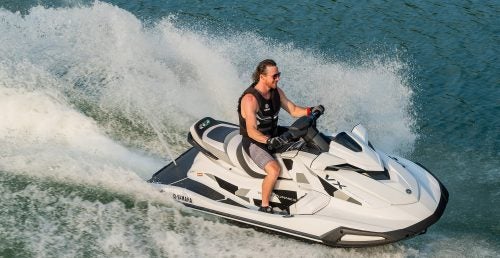



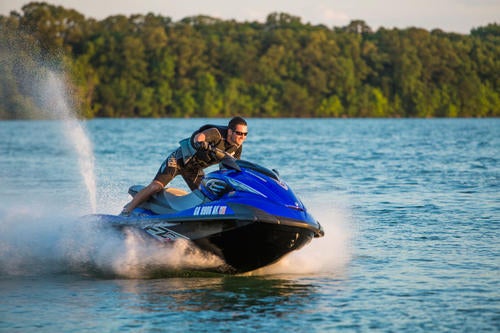
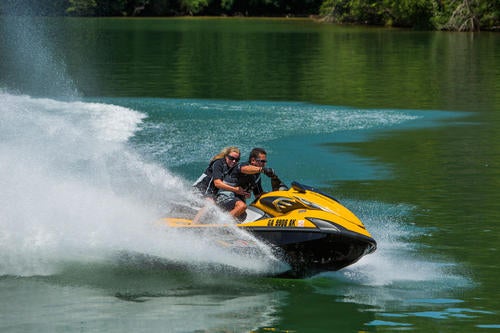
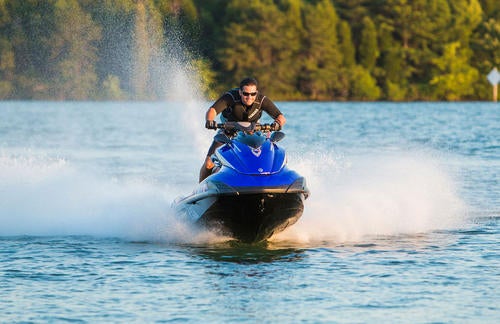
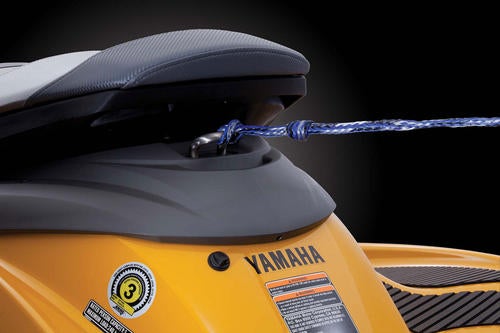
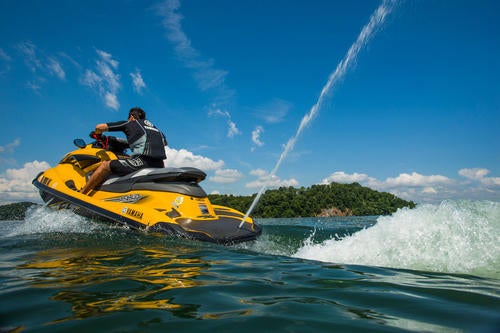







 Your Privacy Choices
Your Privacy Choices